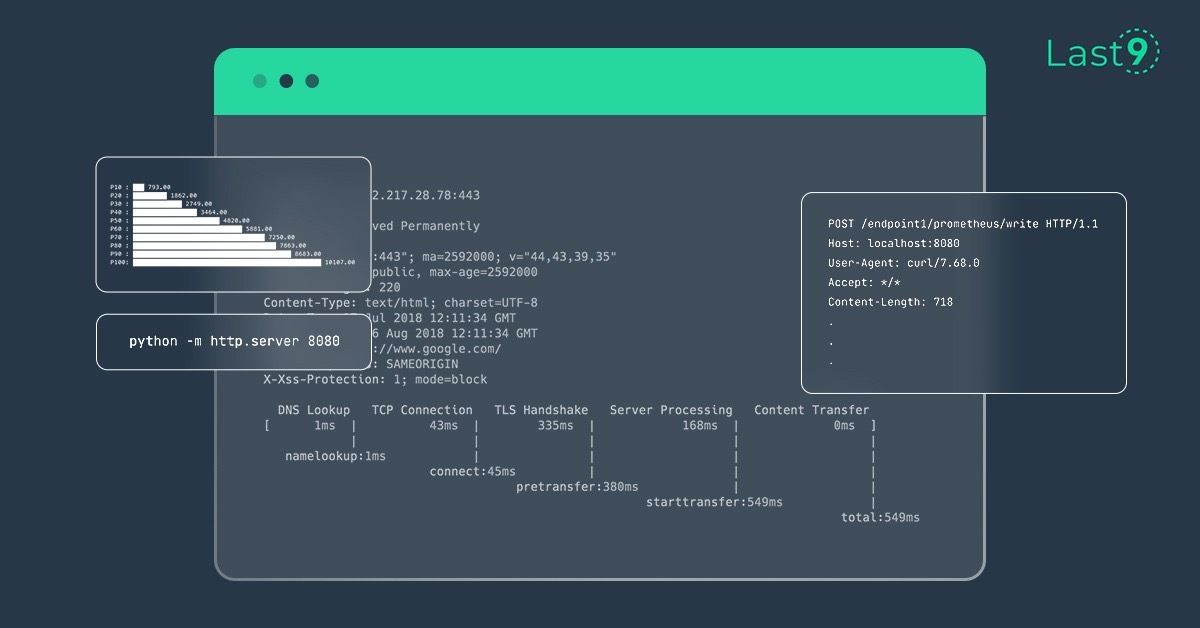When building modern applications, choosing the right communication protocol is crucial for performance, scalability, and ease of integration.
Among the most common options, gRPC, HTTP, and REST often come up in discussions, each with its strengths and weaknesses.
But how do you know which one to use? Let’s break it down in this comprehensive comparison.
Quick Comparison: gRPC vs HTTP vs REST
| Factor | gRPC | HTTP | REST |
|---|---|---|---|
| Performance | High performance with HTTP/2 and Protocol Buffers. Ideal for low-latency, high-throughput applications. | Reliable for basic web apps but slower for large-scale systems (uses HTTP/1.1). | Slower than gRPC due to JSON parsing and HTTP/1.1 overhead. |
| Ease of Use | Steeper learning curve; requires ProtoBuf and additional setup. | Simple and widely understood by developers. | Very user-friendly and intuitive for web developers. |
| Scalability | Highly scalable, using HTTP/2’s multiplexing for efficient communication. | Dependent on application design and request handling. | Scales well for most web apps but less efficient under high traffic compared to gRPC. |
| Flexibility | Limited; requires ProtoBuf and specific structure. | Very flexible with support for various data formats. | Highly flexible, supports multiple data formats, and easy integration. |
| Language Support | Broad support for languages like Java, Go, C++, Python, and Ruby. | Universally supported across all languages. | Fully compatible with all major programming languages. |
What is gRPC?
gRPC (Google Remote Procedure Call) is a high-performance, open-source framework for building efficient and scalable microservices. It allows communication between applications through remote procedure calls (RPCs), enabling fast data transmission.
One of the standout features of gRPC is that it uses HTTP/2 for communication, which provides several advantages, including multiplexing, header compression, and better handling of multiple requests. It also supports a variety of programming languages, making it a flexible choice for polyglot environments.
Key Features of gRPC:
- HTTP/2 Support: This enables features like multiplexed streams and lower latency.
- Protocol Buffers: Data is serialized using Protocol Buffers (ProtoBuf), which is more efficient than JSON or XML.
- Bidirectional Streaming: gRPC supports long-lived connections, making it ideal for real-time applications.
- Strongly Typed: APIs are defined with ProtoBuf, ensuring that data structures are well-typed, reducing errors.
- Cross-Language Support: gRPC allows communication between services written in different programming languages.
When to Use gRPC:
- Microservices Architecture: gRPC’s low latency and high throughput make it ideal for microservices communication.
- Real-Time Systems: Applications like chat services, live data feeds, or gaming platforms benefit from gRPC’s bidirectional streaming.
- Polyglot Environments: If your system involves multiple programming languages, gRPC’s cross-language support simplifies integration.
What is HTTP?
HTTP (Hypertext Transfer Protocol) is the foundation of any data exchange on the web. It’s the protocol used for communication between web browsers and servers and is the basis for REST, which is one of its more popular applications.
HTTP is a stateless, request-response protocol. This means that every time a client requests the server, the server processes the request and sends back a response, with no memory of previous interactions.
Key Features of HTTP:
- Simple and Well-Known: HTTP is widely understood and used for most web applications.
- Stateless: Every HTTP request is independent, meaning the server does not store any session data between requests.
- Flexible: HTTP can be used with a wide range of data formats, including JSON, XML, and plain text.
- Universal: Supported by all web browsers, servers, and clients.
When to Use HTTP:
- Simple Applications: If your app is a straightforward, request-response web application, HTTP might be the easiest and most efficient choice.
- Traditional Web Development: HTTP works perfectly for websites and applications where statefulness isn’t a major concern.
What is REST?
REST (Representational State Transfer) is an architectural style that uses HTTP for communication between clients and servers. While HTTP serves as the protocol, REST is about the principles behind how data should be exchanged.
In RESTful APIs, the client interacts with resources (such as databases or services) using standard HTTP methods (GET, POST, PUT, DELETE), typically returning data in formats like JSON or XML.
Key Features of REST:
- Stateless: Each request is independent, with no need for the server to store any information about previous requests.
- Resource-Oriented: REST operates around resources, such as users, products, or orders, which are accessed using URLs.
- Human-Readable: RESTful APIs often return data in JSON, which is easy for humans to read and debug.
- Cachable: HTTP caching mechanisms work well with REST, allowing responses to be cached for efficiency.
When to Use REST:
- Web and Mobile Applications: REST is the go-to choice for web and mobile applications due to its simplicity and ease of integration.
- Public APIs: REST is widely used for public-facing APIs, especially those that need to be used by third-party developers.
- Stateless Operations: If your application doesn’t require maintaining session information between requests, REST is a great fit.
Comparing gRPC vs HTTP vs REST
Choosing the right communication protocol is essential for your application's success.
Here's a detailed comparison of gRPC, HTTP, and REST based on key factors:
1. Performance
- gRPC: Delivers high performance with HTTP/2 and Protocol Buffers, making it ideal for low-latency, high-throughput applications.
- HTTP: Reliable for basic web applications but slower than gRPC for large-scale systems due to HTTP/1.1 limitations.
- REST: Performance depends on implementation, often slower than gRPC due to JSON parsing overhead.
2. Ease of Use
- gRPC: Steeper learning curve; requires defining services with ProtoBuf and setting up additional tools.
- HTTP: Straightforward and widely understood by developers, making it easy to implement.
- REST: Extremely user-friendly, especially for web developers, with intuitive design and simple integration.
3. Scalability
- gRPC: Excellent scalability, using HTTP/2’s multiplexing for efficient communication in microservices architectures.
- HTTP: Scalability relies on application design and request management strategies.
- REST: Scales well for most web applications but may struggle under high traffic compared to gRPC.
4. Flexibility
- gRPC: Limited flexibility due to strict requirements for ProtoBuf and specific setups.
- HTTP: Very flexible, supporting various data formats and use cases.
- REST: Highly flexible, compatible with multiple data formats, and versatile for web integrations.
5. Language Support
- gRPC: Broad support across languages like Java, Go, C++, Python, Ruby, and more.
- HTTP: Universally supported as the backbone of web communication.
- REST: Compatible with all major programming languages since it extends HTTP capabilities.
gRPC vs HTTP: What to Expect in Performance
When comparing gRPC and HTTP, the choice can significantly influence your application's efficiency, scalability, and overall user experience.
Here's a closer look at the performance aspects of each and how they measure up against one another.
1. Latency
gRPC:
- Low Latency: A key advantage of gRPC is its low-latency communication, enabled by HTTP/2. HTTP/2 supports multiplexing, allowing multiple requests to share a single connection. This reduces round-trip times and improves performance, particularly in high-traffic systems.
- Efficient Serialization: gRPC uses Protocol Buffers (ProtoBuf) for data serialization, which is more compact and faster than JSON or XML, reducing data transfer overhead and lowering latency.
HTTP:
- Higher Latency: Traditional HTTP (often HTTP/1.1) has higher latency since it opens a new connection for each request-response cycle, which can be costly when handling numerous concurrent requests.
- Less Efficient Serialization: HTTP often relies on JSON or XML, which are larger and slower to serialize and deserialize compared to gRPC’s Protocol Buffers.
2. Throughput
gRPC:
- High Throughput: gRPC thrives in high-throughput scenarios by utilizing HTTP/2 features like multiplexing, header compression, and its compact binary protocol (Protocol Buffers). These features enable efficient data transfer, making gRPC ideal for large-scale systems and microservices.
- Streaming Support: gRPC supports bidirectional streaming, allowing large data transfers without multiple request-response cycles, boosting throughput.
HTTP:
- Moderate Throughput: HTTP, especially HTTP/1.1, isn’t optimized for high throughput. While HTTP/2 introduces improvements like multiplexing and header compression, it still doesn’t match the efficiency of gRPC’s Protocol Buffers.
3. Connection Efficiency
gRPC:
- Persistent Connections: gRPC reuses connections for multiple requests, reducing the need for repetitive connection setups. This is particularly beneficial in microservices architectures requiring frequent service-to-service communication.
- Bidirectional Communication: gRPC allows clients and servers to send and receive messages simultaneously, further enhancing connection efficiency.
HTTP:
- Stateless Connections: HTTP generally establishes a new connection for each request. While HTTP/2 allows multiplexing over a single connection, it’s not as efficient as gRPC’s persistent connections.
- Limited Streaming: HTTP/2 supports streaming but lacks the seamless integration of gRPC’s bidirectional streaming capabilities.
4. Error Handling and Retries
gRPC:
- Integrated Retries and Error Handling: gRPC has built-in mechanisms for retries and error management, enhancing its reliability in high-load scenarios. Its detailed error codes help manage failure scenarios effectively.
- Flow Control: gRPC includes flow control features that optimize data transmission, reducing congestion and packet loss.
HTTP:
- Manual Error Handling: HTTP often requires custom implementations or third-party tools for error handling and retries, which can add complexity.
- Limited Flow Control: While HTTP/2 improves data handling, it’s less advanced than gRPC in managing data flow efficiently.
5. Scalability
gRPC:
- Highly Scalable: gRPC’s efficient communication and lightweight data transfer make it suitable for scaling microservices and distributed systems. HTTP/2 support optimizes network resource usage, crucial for handling large traffic volumes.
- Load Balancing: Built-in load balancing in gRPC ensures even traffic distribution across servers, maintaining performance under heavy loads.
HTTP:
- Scaling Challenges: HTTP can scale but often requires additional optimizations, such as load balancing and connection management, to match gRPC’s efficiency. Its stateless nature adds complexity to managing many concurrent connections.
6. Bandwidth Usage
gRPC:
- Compact Data Transfer: Using Protocol Buffers, gRPC minimizes bandwidth usage with compact binary data formats, making it suitable for bandwidth-sensitive environments.
- Header Compression: HTTP/2's header compression further reduces data transfer sizes.
HTTP:
- Higher Bandwidth Needs: The larger size of JSON or XML payloads increases bandwidth consumption, which may be a concern in scenarios requiring efficient data handling.
gRPC Streaming vs. HTTP Methods
One of the standout features of gRPC is its support for streaming, allowing you to handle real-time data and long-lived connections.
Streaming methods provide a powerful way to build applications that require continuous data flow or bidirectional communication.
Let's explore the different streaming methods in gRPC and how they can be utilized for various use cases.
1. Unary RPC (Non-Streaming)
Before we understand into streaming methods, it’s important to understand that unary RPCs are the default type of gRPC calls, where the client sends a single request and the server responds with a single response.
While unary calls are simple and efficient for many use cases, streaming takes things a step further.
2. Server Streaming RPC
In server streaming RPCs, the client sends a single request, but the server responds with a stream of multiple messages throughout the connection.
This is ideal for scenarios where the client needs to receive a continuous flow of data without having to make multiple requests.
Key Features:
- Single Request, Multiple Responses: The client sends a single request to the server, and the server streams multiple responses back to the client.
- Real-Time Data Feeds: This method is perfect for real-time data delivery, such as live sports scores, stock prices, or monitoring systems.
- Persistent Connection: The connection between the client and server remains open for the duration of the stream, which helps minimize latency.
Use Cases:
- Log Aggregation: A server can stream logs to the client as new entries are generated.
- Live Streaming: Streaming live events like video or audio where the data is continuous.
Example:
Imagine you're building a weather app that streams live weather updates every minute. The client sends a request to the server asking for weather updates, and the server streams continuous updates back to the client.
service WeatherService { rpc GetWeatherUpdates(WeatherRequest) returns (stream WeatherResponse); }Here, GetWeatherUpdates is a server-streaming method where the server sends multiple WeatherResponse messages.
3. Client Streaming RPC
In client streaming RPCs, the client sends a stream of messages to the server, but the server responds with a single message once the client has finished sending all its data.
This is useful when the client needs to send a large amount of data in chunks and wait for the server to process the entire stream before receiving a response.
Key Features:
- Multiple Requests, Single Response: The client sends a stream of messages, and once the stream is finished, the server processes all the data and returns a single response.
- Efficient for Large Data: Perfect for situations where the client needs to send large files or a series of messages to the server before expecting a response.
Use Cases:
- File Uploads: Clients can stream large files to the server.
- Batch Processing: Sending a batch of data (like logs or sensor readings) for processing by the server.
Example:
If you’re building an app that allows users to upload large images or videos, the client would stream the content to the server, and once the upload is complete, the server would process it and send a confirmation response.
service FileUploadService { rpc UploadFile(stream FileRequest) returns (UploadResponse); }Here, the client streams FileRequest messages containing chunks of the file to the server, which processes them and sends back a single UploadResponse.
4. Bidirectional Streaming RPC
Bidirectional streaming allows both the client and the server to send a stream of messages to each other.
Unlike server or client streaming, where one side of the communication is fixed, bidirectional streaming allows continuous communication in both directions, making it ideal for real-time, interactive applications.
Key Features:
- Simultaneous Communication: Both the client and server can send and receive messages at the same time, making it ideal for interactive scenarios.
- Full-Duplex Communication: This method supports full-duplex communication, which means both parties can exchange data independently, allowing for more dynamic interactions.
Use Cases:
- Chat Applications: Both the client and server can send messages in real time, enabling live conversations.
- Real-Time Collaborative Tools: Multiple users can send and receive data simultaneously, such as in collaborative document editing or live gaming.
- Streaming Analytics: Real-time analytics dashboards where the client sends requests and the server streams back processed data as it becomes available.
Example:
Imagine a real-time drawing app where users can send their drawing updates in real time, and the server streams back the updated canvas to all connected users.
service DrawingService { rpc StreamDrawings(stream DrawingRequest) returns (stream DrawingResponse); }In this case, both the client and server send and receive streaming messages, making it possible for users to interact instantaneously.
5. Performance Considerations with Streaming
While gRPC streaming offers fantastic features for real-time communication, it's important to be mindful of potential performance challenges:
- Connection Management: Keeping long-lived connections open can strain resources, so it's essential to manage connections efficiently.
- Backpressure: In bidirectional streaming, if the client or server cannot process data quickly enough, backpressure management techniques may need to be implemented to prevent overload.
- Network Latency: Streaming can be sensitive to network conditions. Make sure to implement proper error handling and retries to ensure smooth communication.
HTTP Methods
HTTP methods are a fundamental part of RESTful APIs, determining the type of operation that will be performed on a resource. Here are the most common HTTP methods:
- GET:
- Retrieves data from the server. It’s one of the most common HTTP methods, used for fetching information from a URL without changing any data on the server.
- Example:
GET /usersto fetch a list of users.
- POST:
- Sends data to the server to create a new resource or trigger an action. POST requests are often used to submit form data or send data to be processed.
- Example:
POST /usersto create a new user.
- PUT:
- Replaces or updates an existing resource on the server. When sending a PUT request, the client sends the full data of the resource to be updated.
- Example:
PUT /users/1to update the details of the user with ID 1.
- PATCH:
- Similar to PUT, but instead of replacing the entire resource, PATCH is used to apply partial modifications to an existing resource.
- Example:
PATCH /users/1to update just the email address of the user with ID 1.
- DELETE:
- Removes a resource from the server.
- Example:
DELETE /users/1to delete the user with ID 1.
- HEAD:
- Similar to GET, but it only retrieves the headers of the response, without the actual body.
- Example:
HEAD /usersto check metadata about the user's resource.
- OPTIONS:
- Describes the communication options for the target resource. This is often used to check which HTTP methods are allowed for a specific resource.
- Example:
OPTIONS /usersto check which methods are supported by the user's endpoint.
- TRACE:
- Used for diagnostic purposes, TRACE retrieves the full request as it was received by the server, providing a way to trace the path of an HTTP request.
- Example:
TRACE /usersto trace the request path.
- CONNECT:
- Establishes a tunnel to the server, often used for SSL/TLS connections (HTTPS).
- Example:
CONNECT www.example.comfor an encrypted connection.
Each of these HTTP methods has specific use cases and is an essential part of building web APIs that interact with resources efficiently and predictably.
Conclusion
Choosing between gRPC, HTTP, and REST depends on your specific use case. If you need low-latency, high-performance communication between microservices, gRPC is the best option.
For simple web applications or APIs that don’t require instant data exchange, REST is a reliable and widely-used choice. HTTP itself is perfect for basic web browsing or simpler use cases where scalability isn’t a primary concern.
Ultimately, it’s about evaluating your application’s needs in terms of performance, scalability, ease of use, and flexibility. While gRPC shines in complex systems and applications requiring immediate responsiveness, HTTP and REST continue to be fundamental to the world of web development.
FAQs
What are the main differences between gRPC and REST?
gRPC uses HTTP/2 and Protocol Buffers for communication, offering low latency and efficient data serialization. REST typically uses HTTP/1.1 and formats like JSON or XML, which are more human-readable but less efficient in terms of performance and bandwidth.
Is gRPC better than HTTP for real-time systems?
Yes, gRPC is often preferred for applications requiring low latency and real-time data exchange due to its efficient streaming and multiplexing capabilities with HTTP/2.
Can gRPC be used for web applications?
gRPC can be used for web applications, but it is generally better suited for backend service-to-service communication. REST is still the more popular choice for web APIs due to its simplicity and compatibility with browsers.
How does REST differ from HTTP?
REST is an architectural style that uses HTTP as its underlying protocol. HTTP provides the foundation (methods like GET, POST, PUT), while REST defines how resources are structured and interacted with over HTTP.
Is gRPC harder to implement than REST?
gRPC has a steeper learning curve due to its reliance on Protocol Buffers and the need for specific tooling. REST, being text-based and widely adopted, is easier to learn and implement.
Which is more scalable: gRPC, HTTP, or REST?
gRPC is generally more scalable for microservices and high-performance systems because of its efficient connection management and streaming. REST can also scale well but may require additional optimizations due to its stateless nature.
Can gRPC and REST coexist in the same system?
Yes, they can coexist. Many organizations use gRPC for internal microservices communication and REST for exposing APIs to external users.
Does gRPC support authentication like REST?
Yes, gRPC supports various authentication mechanisms, including SSL/TLS and token-based authentication. REST often relies on HTTPS and standards like OAuth2 for security.
Is gRPC suitable for mobile applications?
gRPC can be used for mobile apps, particularly when efficiency is critical. However, REST is often preferred because of better support across various mobile platforms and simplicity.
What are the use cases for HTTP alone?
HTTP is suitable for simple web applications, file transfers, and basic website hosting. It is the foundation for REST but can also be used independently for lightweight or straightforward communication needs.



